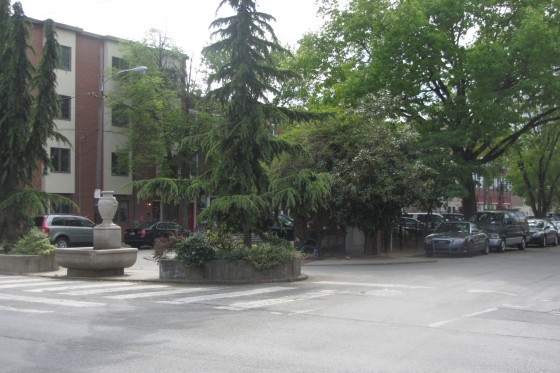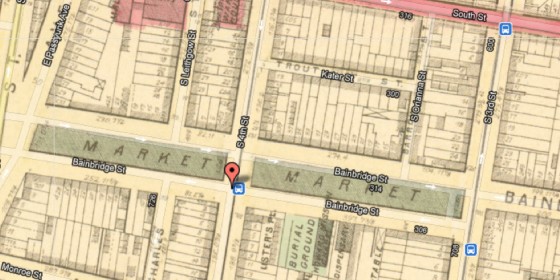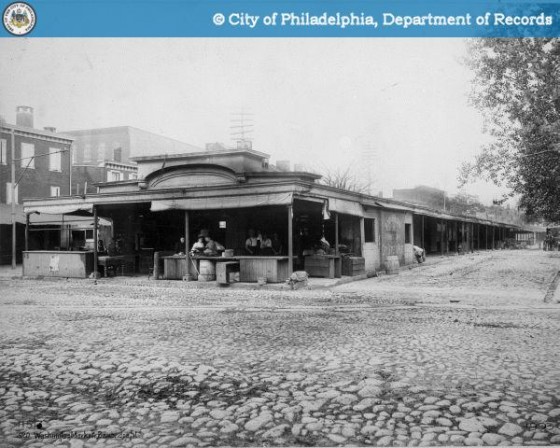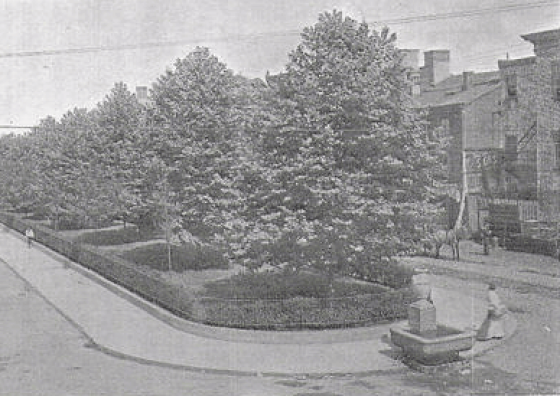If you’ve ever walked, cycled or driven the length of Bainbridge Street between 3rd and 5th Sts., you’re probably familiar with the strange island of parking spaces dividing Bainbridge Street into an east and westbound lane in the middle an otherwise fairly straightforward grid of one-way streets (aside from the beginning of Passyunk Avenue, but that’s an issue for another day).

Current view
Well, time was when you could buy your meat, beet borscht and kishkas right there in the middle of Bainbridge Street. Now, all you can buy is a parking spot, and only for two hours at that. In the late 19th century, Russian, Polish and Jewish immigrants came to dominate the Queen Village neighborhood with particular concentration between Christian and South, and 3rd and 6th Streets. The neighborhood became a dense cluster of immigrant shops, tailors, theaters and eateries, as well as synagogues, sweatshops and modest to ramshackle homes. South Street became a thriving center for this variety of establishments. Just a block south—according to the image borrowed from G.M. Hopkins’ 1875 Philadelphia Atlas–a marketplace of semi-permanent shops and stalls cropped up directly down the middle of the cobblestone street from the western side of 3rd Street to eastern end of Passyunk Avenue.

Market
PhillyHistory.org refers to this as the Washington Market but reports that it may alternately have been known as the Youngblood Meat Market. The photo below shows the market in 1915, almost at the end of the line.

In 1915
A series of articles about Early Philadelphia Markets by David O’Malley tells us that the city, dismayed over squalid conditions and rat infestations, saw to the closure of the market, replacing it with a lovely tree-lined green space. The city boasted of the environmental accomplishment, pictured below, in the Philadelphia Parks Commission Annual Report of 1916. . . before ultimately landscaping it with several dozen parking meters.

Looked nice back then, but could use more cars, don't you think?
–David Tomar

Leave a Reply